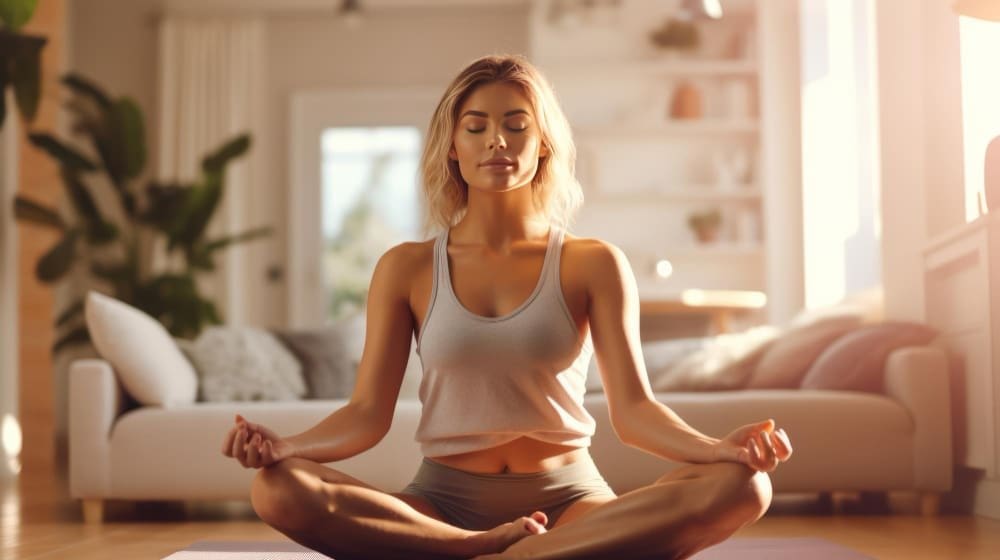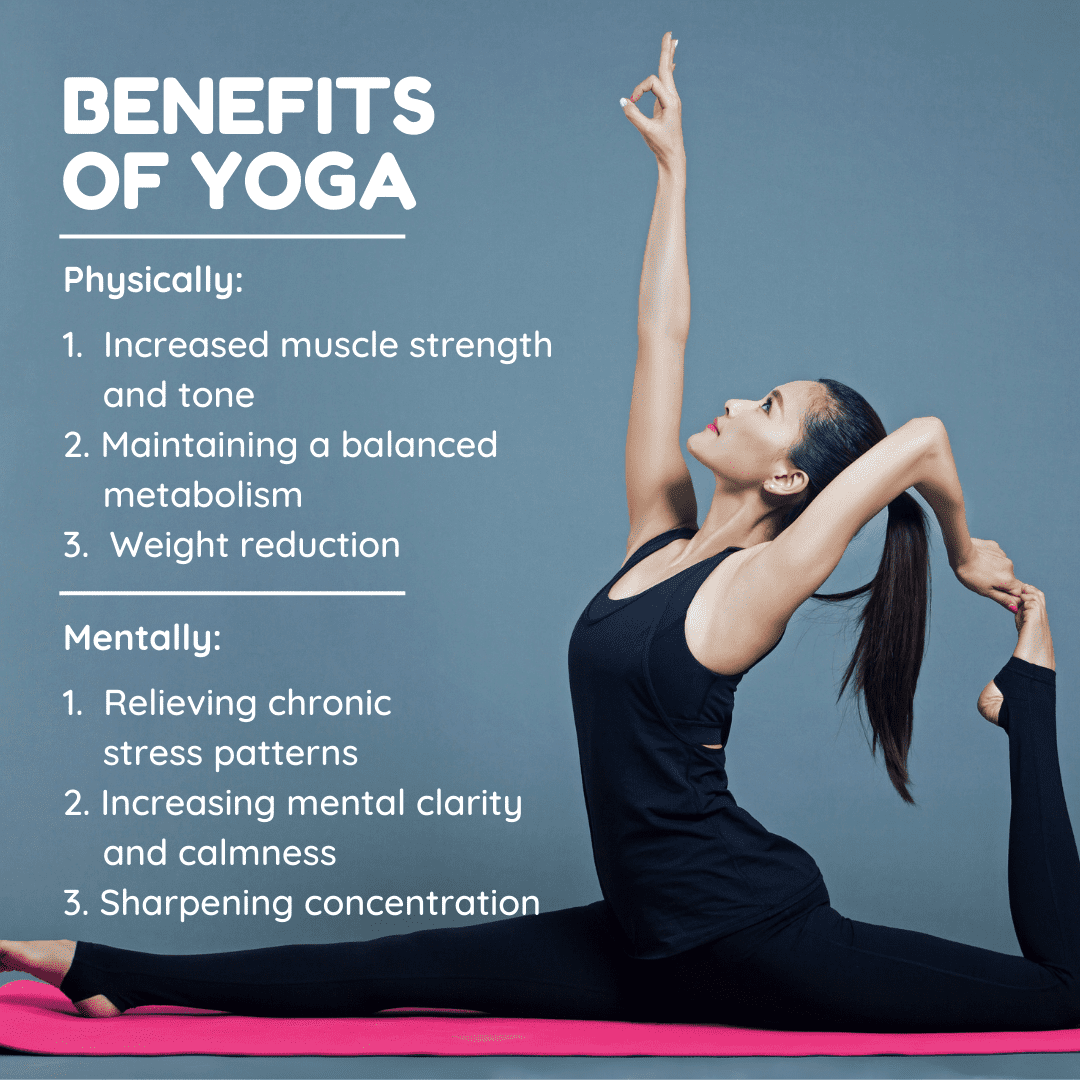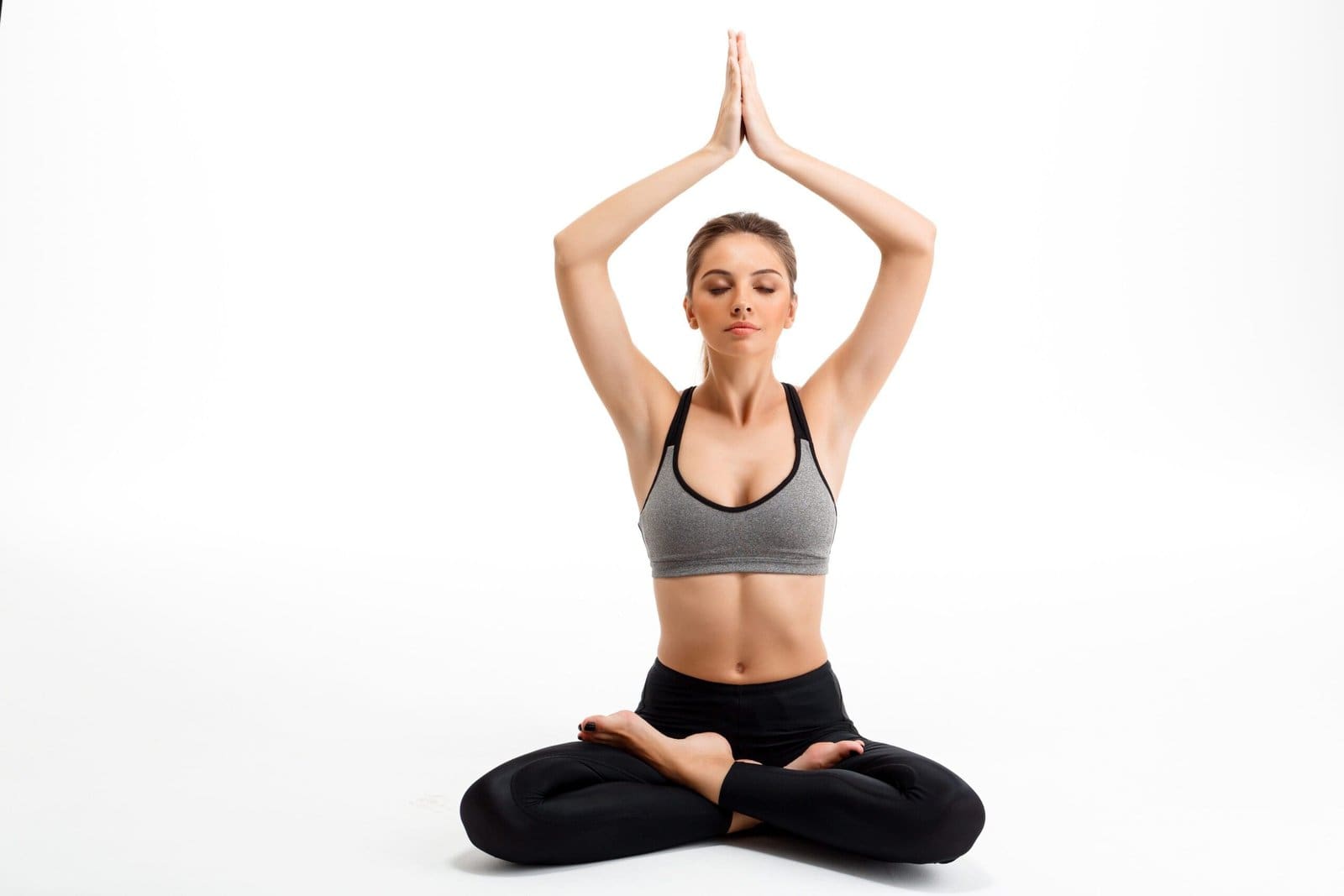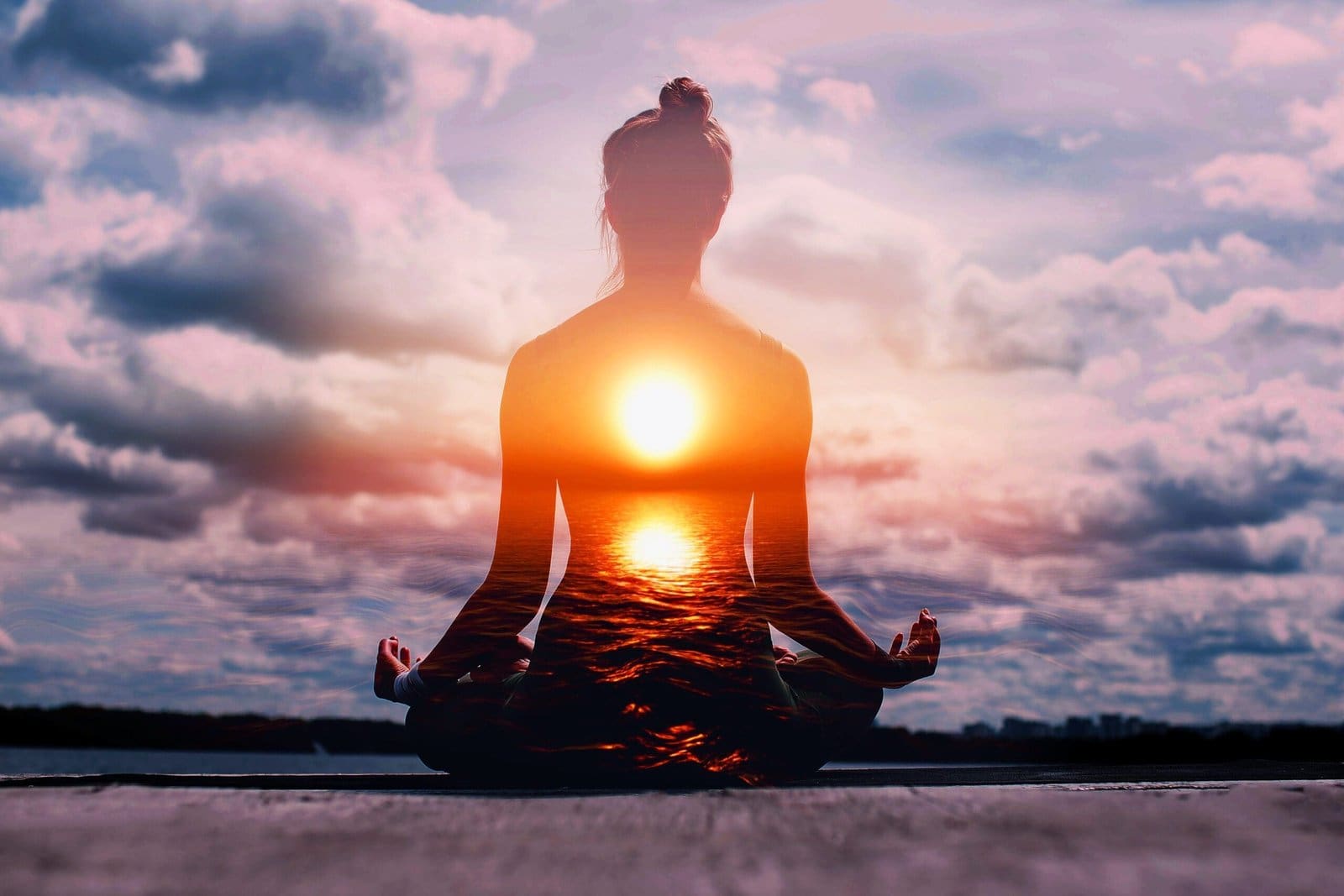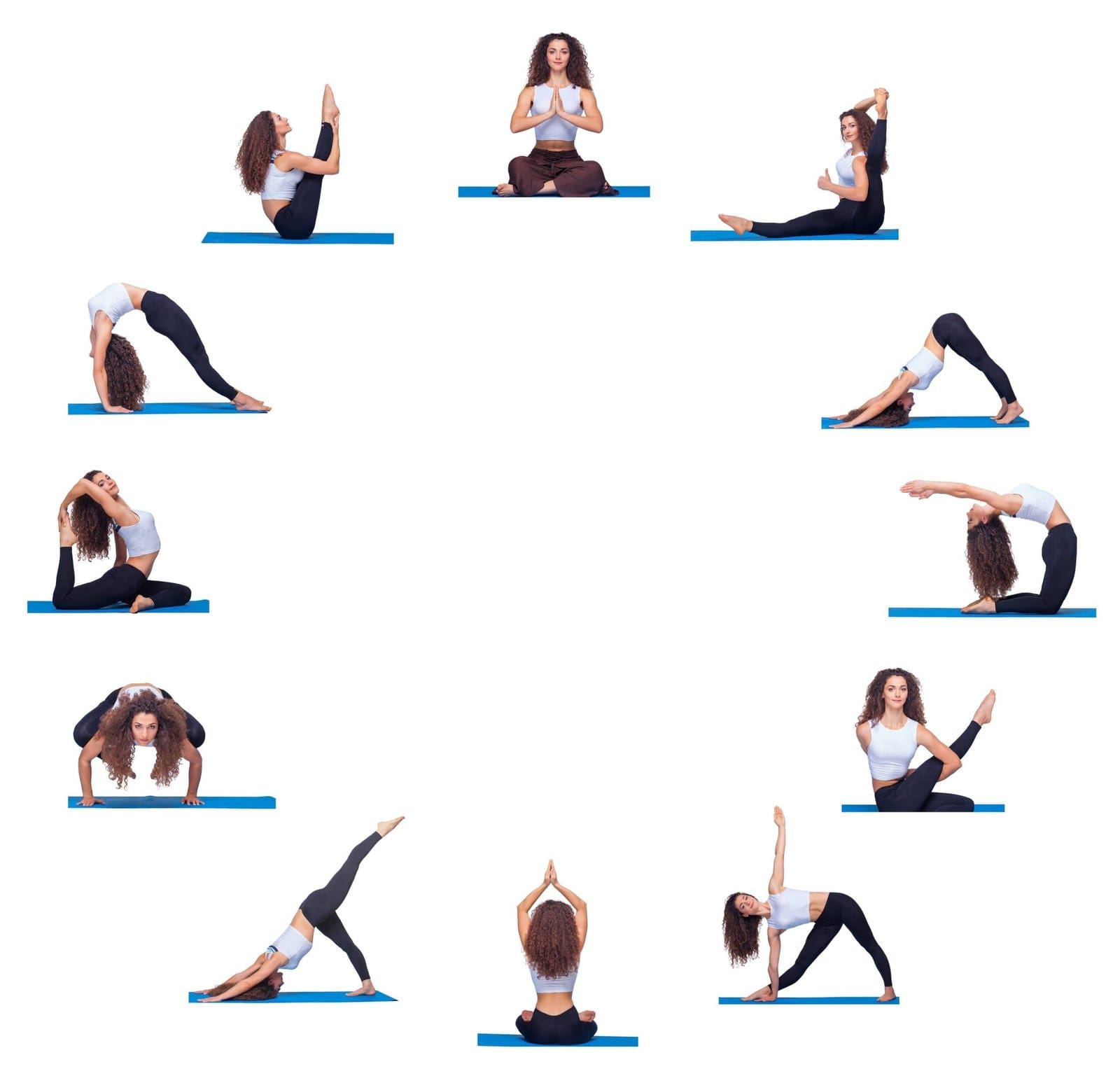Unlocking the Path to Wellness: Exploring Different Types of Yoga
In today’s fast-paced world, it’s crucial to prioritize our well-being and find effective ways to unwind and destress. One practice that has gained immense popularity is yoga. With its origins deeply rooted in ancient India, yoga offers a holistic approach to wellness, encompassing the physical, mental, and spiritual aspects of our lives. In this comprehensive guide, we will delve into the diverse world of yoga, exploring different types of yoga and their unique benefits. So, roll out your mat, take a deep breath, and let’s embark on a transformative journey of self-discovery and wellness.
1. Hatha Yoga: Aligning Body and Breath
At the foundation of all yoga styles, we find Hatha Yoga. This gentle practice focuses on aligning the body and breath, incorporating physical postures (asanas), breathing techniques (pranayama), and meditation. By embracing Hatha Yoga, individuals can enhance their flexibility, build strength, and experience an overall sense of well-being.
2. Vinyasa Yoga: Flowing with Breath and Movement
Vinyasa Yoga is a dynamic and flowing style that synchronizes movement with breath. Through graceful transitions between poses, practitioners cultivate strength, endurance, and mindfulness. This yoga style not only improves physical fitness but also helps release mental and emotional tension, leading to increased focus and clarity.
3. Ashtanga Yoga: The Eight-Limbed Path to Discipline
Ashtanga Yoga follows the eight-limbed path outlined by the sage Patanjali. This structured and rigorous practice involves a predetermined series of poses combined with synchronized breathing. By practicing Ashtanga Yoga, individuals can enhance physical strength, increase flexibility, and develop discipline and concentration. It offers a transformative journey that nurtures both the body and the mind.
4. Bikram Yoga: Heat-Induced Detoxification
Bikram Yoga, also known as hot yoga, takes place in a heated room typically set to 105°F (40.6°C). The practice consists of a specific sequence of 26 postures and two breathing exercises. The heat intensifies the benefits, allowing for deeper stretching and detoxification through sweating. Bikram Yoga promotes cardiovascular health, improves circulation, and aids in weight management.
5. Kundalini Yoga: Awakening the Inner Energy
Kundalini Yoga focuses on awakening the dormant spiritual energy within each individual. This practice incorporates physical postures, breathwork, chanting, and meditation to promote self-awareness and spiritual growth. Kundalini Yoga cultivates vitality, reduces stress, and enhances intuition, leading to a balanced and joyful life.
6. Restorative Yoga: Deep Relaxation and Healing
Restorative Yoga is a gentle and nurturing practice that promotes deep relaxation and healing. With the support of props like bolsters, blankets, and blocks, practitioners are fully supported in each pose, allowing them to release tension and restore the body’s natural equilibrium. This style of yoga is particularly beneficial for reducing stress, improving sleep quality, and enhancing overall well-being.
7. Yin Yoga: Embracing Stillness and Surrender
Yin Yoga is a slow-paced and meditative practice that targets the connective tissues, such as ligaments, tendons, and fascia. Poses are held for an extended period,
typically ranging from one to five minutes, allowing for deep stretching and releasing physical and emotional blockages. Yin Yoga cultivates mindfulness, improves flexibility, and stimulates the flow of vital energy throughout the body.
Types of Yoga: A Path to Wellness
Practicing different types of yoga offers a multitude of benefits for your overall well-being:
1. Physical Well-being: Regular practice of yoga enhances strength, flexibility, and posture. It improves cardiovascular health, aids in weight management, and reduces the risk of chronic diseases.
2. Mental and Emotional Health: Yoga reduces stress, anxiety, and depression. It enhances focus, concentration, and mental clarity, leading to a balanced state of mind.
3. Spiritual Growth: Yoga provides a pathway to self-discovery and spiritual awakening. Through meditation and mindfulness, practitioners develop a deeper connection with their inner selves and the world around them.
4. Increased Energy and Vitality: Yoga stimulates the flow of vital energy (prana) in the body, leaving individuals feeling rejuvenated, energized, and ready to tackle life’s challenges.
5. Improved Sleep Quality: Regular practice of yoga promotes relaxation and reduces insomnia, resulting in improved sleep quality and overall well-restedness.
6. Enhanced Immune Function: Yoga supports the body’s immune system, helping to prevent illness and promote overall well-being.
7. Increased Self-Awareness: Yoga cultivates self-awareness and self-acceptance, allowing individuals to develop a positive relationship with themselves and others.
Conclusion:
Incorporating different types of yoga into your life can be a transformative journey towards improved physical, mental, and spiritual well-being. Whether you’re seeking strength, flexibility, relaxation, or self-discovery, the diverse world of yoga has something to offer. So, roll out your mat, breathe deeply, and let the magic of yoga guide you towards a path of wellness and self-transformation.
Disclaimer
The content is purely informative and educational in nature and should not be construed as medical advice. Please use the content only in consultation with an appropriate certified medical or healthcare professional

Different Types Of Yoga And Benefits
Explore Different Types Of Yoga And Benefits and their advantages. Enhance flexibility, relieve stress, and build strength with diverse yoga practices for well-being.

5 Different Types Of Yoga
Explore “5 Different Types Of Yoga,” from dynamic Vinyasa to serene Yin, for holistic well-being.

Exploring Yin Yoga: Essential Poses For Deep Stretching
Explore Yin Yoga’s deep stretching poses for enhanced flexibility, relaxation, and balance. Dive into a transformative practice with us.

10 Essential Yoga Types: Embrace the Diversity
Yoga Types: Are you eager to navigate the world of yoga but uncertain about the starting point? We’ve got you covered! In this piece, we’ll dive deep into the diversity of Yoga Types, presenting ten distinct forms you shouldn’t miss out on today. From the foundational Hatha yoga to the vigorous power yoga, there’s a fit for everyone. Regardless if you’re a novice or a seasoned yogi, this article will guide you through various Yoga Types, enriching your routine and instilling a harmonious balance and tranquility in your life. So, roll out your yoga mat and embark on this enlightening journey through the diverse realm of yoga! 1. Hatha Yoga Introduction to Hatha Yoga Hatha Yoga is one of the most well-known and widely practiced forms of yoga. It originated in ancient India and focuses on physical postures (asanas) and breath control (pranayama). In Sanskrit, “ha” means sun and “tha” means moon, symbolizing the balance of opposing forces within the body. Hatha Yoga aims to create harmony between the mind, body, and spirit through mindful movement and controlled breathing. Benefits of Hatha Yoga Hatha Yoga offers numerous benefits for both the body and mind. Regular practice can improve flexibility, balance, and strength. It also helps to increase body awareness and promote relaxation. Hatha Yoga is a great way to relieve stress and reduce anxiety, as it encourages deep breathing and mindful movements. Additionally, it can improve posture and help prevent injuries by enhancing body alignment. Hatha Yoga Poses Hatha Yoga includes a wide range of poses that vary in difficulty and intensity. Some common poses include Mountain Pose (Tadasana), Downward-Facing Dog (Adho Mukha Svanasana), Warrior 1 (Virabhadrasana 1), and Child’s Pose (Balasana). These poses target different parts of the body, such as the legs, core, and back, providing a full-body workout. Hatha Yoga also incorporates gentle stretches and relaxation poses to release tension and promote a sense of calm. Hatha Yoga Classes Hatha Yoga classes are widely available and suitable for practitioners of all levels, from beginners to advanced yogis. In a typical Hatha Yoga class, you can expect a combination of physical postures, breathing exercises, and meditation. Classes may vary in duration, but they usually run for about 60 to 90 minutes. Hatha Yoga classes are led by experienced instructors who guide students through each pose, ensuring proper alignment and offering modifications when needed. 2. Vinyasa Yoga Introduction to Vinyasa Yoga Vinyasa Yoga, also known as flow yoga, is a dynamic and fast-paced style of yoga that synchronizes breath with movement. It emphasizes continuous transitions between poses, creating a seamless flow of energy throughout the practice. Vinyasa Yoga originated from Hatha Yoga and has gained popularity for its creative sequences and vigorous nature. Benefits of Vinyasa Yoga Vinyasa Yoga offers a multitude of benefits for both the body and mind. The flowing movements help build strength, stamina, and cardiovascular fitness. The breath-focused aspect of Vinyasa Yoga promotes mindfulness and concentration, leading to improved mental clarity and focus. Regular practice can also enhance flexibility, coordination, and body awareness. Vinyasa Yoga Poses Vinyasa Yoga encompasses a wide array of poses, including standing, seated, and balancing poses. Some common poses in Vinyasa Yoga sequences include Sun Salutations (Surya Namaskar), Warrior poses (Virabhadrasana), Plank pose (Phalakasana), and Tree pose (Vrksasana). These poses are often linked together through transitional movements, creating a fluid and dynamic practice. Vinyasa Yoga Classes Vinyasa Yoga classes are energetic and suitable for practitioners of various levels. Each class is unique, as instructors design sequences that cater to different themes, levels of difficulty, and target areas of the body. Classes typically begin with a warm-up followed by a series of dynamic poses, and end with a cool-down period. Vinyasa Yoga classes provide a challenging yet enjoyable experience that leaves practitioners feeling rejuvenated and invigorated. 3. Ashtanga Yoga Introduction to Ashtanga Yoga Ashtanga Yoga, often referred to as “eight-limbed yoga,” is a dynamic and physically demanding form of yoga. It follows a specific sequence of poses that are practiced in a predetermined order. Ashtanga Yoga focuses on synchronizing breath with movement and aims to purify the body and mind through intense physical exertion. Benefits of Ashtanga Yoga Ashtanga Yoga offers a range of benefits for practitioners. The repetitive nature of the practice helps build strength, endurance, and flexibility. It also enhances focus and concentration, as the synchronized breath and movement require full attention. Ashtanga Yoga promotes detoxification of the body through the generation of heat and sweat. Regular practice can lead to improved posture, weight management, and a sense of inner calm. Ashtanga Yoga Poses Ashtanga Yoga follows a set sequence of poses divided into six series. The Primary Series (Yoga Chikitsa) is the first series and focuses on realigning and detoxifying the body. It includes standing poses, forward folds, hip openers, and inversions. The subsequent series introduce more challenging poses and variations to further deepen the practice. Ashtanga Yoga poses require strength, flexibility, and perseverance. Ashtanga Yoga Classes Ashtanga Yoga classes are typically led in a traditional Mysore style, where students practice the Ashtanga sequence at their own pace under the guidance of an experienced teacher. Beginners can start with shorter sessions and gradually increase their practice. Mysore-style classes allow for personalized attention and modifications based on individual abilities. The disciplined and structured nature of Ashtanga Yoga creates a focused and meditative environment. 4. Bikram Yoga Introduction to Bikram Yoga Bikram Yoga, created by Bikram Choudhury, is a style of yoga practiced in a heated room. It consists of a series of 26 poses and two breathing exercises. Bikram Yoga follows a specific sequence and is performed in a room heated to approximately 105 degrees Fahrenheit (40 degrees Celsius) with high humidity. Benefits of Bikram Yoga Bikram Yoga offers various physical and mental benefits. The heat and humidity in the room help warm up the muscles and increase flexibility, allowing for deeper stretches. It also promotes detoxification through sweat, helping to rid the body of toxins. The sequence of

Exploring Hatha Yoga: 10 Wellness Keys
Have you been exploring the wonders of Hatha Yoga to enhance your mental and physical well-being? You’re in the right place! This guide will delve into ten vital insights to seamlessly integrate Hatha Yoga practices into your day-to-day life. Whether you aim to boost flexibility, maintain equilibrium, diminish stress, or cultivate serenity, these revelations promise to usher you into a realm of unparalleled health and tranquility. So, roll out your yoga mat, seek a serene corner, and prepare to immerse yourself in the transformative world of Hatha Yoga. The Origins of Hatha Yoga Introduction to Hatha Yoga Hatha Yoga is a branch of yoga that focuses on physical postures (asanas), breath control (pranayama), and meditation. It originated in ancient India and has been practiced for thousands of years. Hatha Yoga is often seen as a gentle and accessible form of yoga, suitable for beginners and experienced practitioners alike. Historical Background The roots of Hatha Yoga can be traced back to the 11th century in India, although its principles and practices can be found in the ancient texts known as the Upanishads and the Bhagavad Gita. Hatha Yoga was developed as a means to prepare the body for the spiritual practice of Raja Yoga. It gained popularity in the West during the 20th century when renowned yogis, such as Swami Sivananda and B.K.S. Iyengar, introduced it to the world. Philosophical Roots Hatha Yoga draws inspiration from the philosophical teachings of ancient Indian scriptures, including the Yoga Sutras of Patanjali. The foundation of Hatha Yoga lies in the belief that the body and the mind are interconnected. By working with the body through physical postures and breath control, practitioners can achieve a state of balance, harmony, and self-realization. Benefits of Hatha Yoga Physical Well-being Practicing Hatha Yoga regularly can lead to numerous physical benefits. The asanas (yoga poses) help improve strength, flexibility, and balance. They also promote better posture, relieve tension, and enhance circulation. Hatha Yoga is known to alleviate chronic pain and improve overall physical well-being. Mental and Emotional Health Hatha Yoga not only benefits the body but also has a positive impact on mental and emotional health. The practice promotes relaxation, reduces stress, and calms the mind. Through mindful breathing and meditation, practitioners can gain clarity, improve focus, and develop a sense of inner peace and emotional stability. Spiritual Growth Hatha Yoga provides a pathway for spiritual growth and self-discovery. By cultivating awareness and mindfulness, practitioners can connect with their inner selves and tap into their spiritual essence. The practice of meditation helps quiet the mind, allowing for a deeper understanding of oneself and the world around us. Principles of Hatha Yoga Asanas (Yoga Poses) Asanas are the physical postures practiced in Hatha Yoga. They are designed to strengthen and stretch the body while promoting balance and stability. Asanas help improve flexibility, release tension, and create a sense of physical and mental harmony. Regular practice of asanas can enhance overall well-being and vitality. Pranayama (Breathing Techniques) Pranayama focuses on breath control and regulation. Through various breathing techniques, practitioners can cultivate awareness of the breath and harness its power to calm the mind and invigorate the body. Pranayama helps improves lung capacity, relieves anxiety, and promotes a sense of well-being. Mudras (Hand Gestures) Mudras are symbolic hand gestures used in Hatha Yoga to activate energy channels in the body. By placing the hands in specific positions, practitioners can influence the flow of energy and promote balance and healing. Mudras help deepen concentration, increase vitality, and enhance the overall benefits of the practice. Bandhas (Energy Locks) Bandhas are energetic locks performed during the practice of asanas and pranayama. By engaging specific muscles and controlling the flow of energy, bandhas help redirect and contain vital energy within the body. This can lead to increased physical strength, enhanced mental clarity, and a heightened state of awareness. Secret 1: Importance of Alignment Understanding Proper Body Alignment Proper body alignment is crucial in Hatha Yoga to ensure maximum benefits and prevent injuries. It involves aligning the various parts of the body, such as the head, spine, and limbs, in a way that supports the natural curves and structure of the body. Understanding and practicing proper alignment can optimize the effectiveness of asanas and promote overall body balance. Benefits of Correct Alignment Correct alignment in Hatha Yoga not only reduces the risk of injury but also allows for a deeper and more profound practice. By aligning the body correctly, one can access the full potential of each pose, allowing for better engagement of muscles and improved energy flow. Proper alignment can also enhance the benefits of pranayama and meditation, leading to a more holistic practice. Secret 2: Breath Awareness The Connection Between Breath and Mind In Hatha Yoga, the breath plays a significant role in connecting the body and mind. By bringing focus and awareness to the breath, practitioners can calm the mind, reduce stress, and enter a meditative state. The breath serves as an anchor, helping to center and ground the practitioner in the present moment. Practices for Enhancing Breath Awareness There are various practices in Hatha Yoga that can enhance breath awareness. One such practice is deep diaphragmatic breathing, where the breath is directed into the belly rather than remaining shallow in the chest. Another technique is alternate nostril breathing, which balances the energy flow in the body. By incorporating these practices into your yoga routine, you can deepen your breath awareness and experience the transformative power of the breath. Secret 3: Mindfulness and Meditation Exploring Mindfulness in Hatha Yoga Mindfulness is a state of non-judgmental awareness, where one pays attention to the present moment with acceptance and curiosity. In Hatha Yoga, mindfulness is cultivated through the practice of asanas, pranayama, and meditation. By bringing conscious awareness to each movement, breath, and sensation, practitioners can experience the present moment fully and deepen their connection with themselves. Incorporating Meditation into Your Practice Meditation is an integral part of Hatha Yoga and offers a host of

5 Best Hatha Yoga Poses for Beginners
In 2023, if you’re a beginner looking to try out Hatha Yoga and experience its numerous benefits, you’ve come to the right place! This article will guide you through the 5 best Hatha Yoga poses specifically designed for beginners. Whether you’re looking to improve flexibility, enhance relaxation, or find inner peace, these poses are perfect for starting your Hatha Yoga journey. So, roll out your yoga mat, and get ready to explore these simple yet effective poses that will leave you feeling refreshed, energized, and ready to take on the day! 1. Mountain Pose (Tadasana) Benefits of Mountain Pose Mountain Pose, also known as Tadasana, is a foundational standing pose in yoga that provides numerous benefits for both the mind and body. This pose helps improve posture, strengthens the muscles of the legs and feet, and promotes balance and stability. It also helps to increase body awareness, calm the mind, and improve focus and concentration. Mountain Pose is a great starting point for beginners as it sets the foundation for other standing poses in yoga practice. How to Perform Mountain Pose To perform Mountain Pose, start by standing tall with your feet together or hip-width apart. Distribute your weight evenly on both feet and engage the muscles of your legs. Lengthen your spine and lift the crown of your head towards the ceiling. Relax your shoulders, allowing them to roll back and down. Palms can face forward or rest gently by your sides. Take deep, slow breaths and hold the pose for several breaths or as long as comfortable. Modifications for Beginners For beginners, it’s common to struggle with balance and alignment in Mountain Pose. To make this pose more accessible, you can stand with your feet hip-width apart for added stability. Placing a block between your thighs can also help engage the leg muscles and promote proper alignment. If you have difficulty standing for long periods, you can practice Mountain Pose against a wall for support. 2. Tree Pose (Vrikshasana) Benefits of Tree Pose Tree Pose, also known as Vrikshasana, is a standing balance pose that helps improve concentration, focus, and balance. This pose strengthens the muscles of the legs and feet, improves posture, and increases the flexibility of the hips and groin. Tree Pose also promotes a sense of rootedness and stability, both physically and mentally, making it an excellent pose for beginners looking to build strength and stability. How to Perform Tree Pose To perform Tree Pose, start by standing tall with your feet hip-width apart. Shift your weight onto your left foot and lift your right foot, placing the sole of your right foot on your left inner thigh. If your balance is unstable, you can rest your right foot on your left calf or ankle instead. Bring your hands to your heart center or extend them overhead, reaching towards the sky. Find a focal point in front of you to help with balance and hold the pose for several breaths. Repeat on the other side. Modifications for Beginners For beginners, maintaining balance in Tree Pose can be challenging. You can practice the pose with your back against a wall for support or use a chair to hold onto for stability. Another modification is to place the sole of your foot on your inner calf rather than your thigh. As you build strength and balance, gradually work towards placing your foot higher on your thigh. 3. Downward Facing Dog (Adho Mukha Svanasana) Benefits of Downward Facing Dog Downward Facing Dog, also known as Adho Mukha Svanasana, is a popular yoga pose that stretches and strengthens the entire body. This pose lengthens the spine, opens the shoulders and chest, strengthens the arms and legs, and increases flexibility in the hamstrings and calves. Downward Facing Dog also helps to relieve stress, calm the mind, improve digestion, and energize the body, making it an excellent pose for beginners to include in their practice. How to Perform Downward Facing Dog To perform Downward Facing Dog, start on your hands and knees with your wrists under your shoulders and your knees under your hips. Press through your palms, tuck your toes under, and lift your knees off the mat, straightening your legs. Lengthen your spine, reaching your tailbone towards the ceiling, and allow your heels to sink towards the floor. Engage your core and legs, and relax your head and neck. Hold the pose for several breaths. Modifications for Beginners For beginners, tight hamstrings can make it challenging to keep the legs straight in Downward Facing Dog. You can bend your knees slightly to alleviate any discomfort and focus on lengthening your spine. Placing a block under your hands can also help bring the floor closer to you, making the pose more accessible. If you have wrist issues, you can perform the pose on your forearms instead. 4. Warrior II (Virabhadrasana II) Benefits of Warrior II Warrior II, also known as Virabhadrasana II, is a powerful standing pose that strengthens the legs, opens the hips, and improves balance and concentration. This pose energizes the entire body while building strength and endurance. Warrior II also enhances stability and promotes a sense of empowerment and confidence. It is a great pose for beginners to cultivate strength and resilience. How to Perform Warrior II To perform Warrior II, start by standing with your feet wide apart. Turn your right foot out to the side, keeping your left foot slightly turned in. Extend your arms parallel to the floor, with your right arm reaching forward and your left arm reaching backward. Bend your right knee, aligning it over your right ankle, and gaze over your right fingertips. Keep your shoulders relaxed and your core engaged. Hold the pose for several breaths and repeat on the other side. Modifications for Beginners For beginners, maintaining stability and balance in Warrior II can be challenging. You can widen your stance or decrease the depth of your lunge to make the pose more accessible. Placing your hands on


